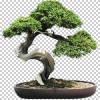We got the technical review back on our initial 'finished' book manuscript. Proved to be an interesting read with a lot of valid points (no idea who reviewed it, but they know their stuff!). Now the proverbial ball is back in my court.
As I'm sure you'll all appreciate, the words I've written are my personal interpretation of a given set of technologies and theories and I will have under- or over- emphasised parts that I personally see as being more or less important. When someone else comes and reviews it, even if they are closely aligned to your views, are going to introduce their own 'personality' into the text. This is mostly a good thing as it forces you to see your work as someone else might, but ultimately it leads to the choice - Do I stick with the way I wanted to portray the topic, or do I change my thinking to be more like X's and change the text accordingly?
I'm inclined to lean towards changing to suit the audience because at the end of the day this book is for them to learn from, not me [smile]
But that said, I have one tough decision to make. Figured I'd write about it here in the interest of gathering your feedback as well as stopping my journal dropping off the bottom of the listing (!![oh]!!).
Ok, so I put a lot of emphasis on dynamic lighting - all of the applied chapters are about lighting models that can be done with no precomputation and are fully shader driven. Obviously this is a quite narrow viewpoint as fully static-lighting (e.g. radiosity) as well as hybrid (e.g. PRT/SH) are perfectly valid techniques in some real-time scenarios.
Early in my section I do make the mistake of arguing that "non-dynamic lighting is useless, avoid at all costs" as a way of supporting my decision to focus only on this subset throughout the remainder of the section.
I need to change this to be less black-and-white, but that's easy.
Our technical reviewer has basically suggested that I should include a couple of extra chapters on indirect lighting and other precomputed lighting techniques. I fully understand their logic and I agree with the few examples listed...
But in a nutshell, I don't think I want to add these chapters.
- We don't have much time before we go to print and launch. Editing is okay, adding it hard.
- Indirect lighting isn't my area of expertise. I've played with most of the major techniques over the years, but can't claim to be an expert.
- There isn't enough space to cover the techniques in as much detail as dynamic/direct lighting has received. Given that it's a big topic I'm wondering whether a half-assed glorified list of techniques is actually worth the extra page count? A list of "further reading" references might well be a more effective use of space..
So, What do you think?



You've also got a fair point that you don't want to write only a short and quick introduction, because that's not really a useful use of space. It won't tell people much more than a simple google search could, and having an introduction but no body is worse than nothing at all.
I'd say that the best solution is simply to make references in appropriate places to other non-dynamic techniques that would be useful - stepping stones for people to continue on reading in other places. No one book has to be the source of all information :).
Good luck with the rest of the process, don't tear out *too* much hair.